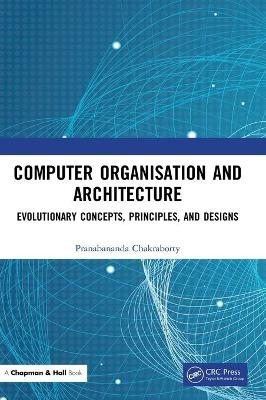
Computer Organisation and Architecture
Chapman & Hall/CRC (Verlag)
978-0-367-25573-2 (ISBN)
Computer organization and architecture is becoming an increasingly important core subject in the areas of computer science and its applications, and information technology constantly steers the relentless revolution going on in this discipline. This textbook demystifies the state of the art using a simple and step-by-step development from traditional fundamentals to the most advanced concepts entwined with this subject, maintaining a reasonable balance among various theoretical principles, numerous design approaches, and their actual practical implementations. Being driven by the diversified knowledge gained directly from working in the constantly changing environment of the information technology (IT) industry, the author sets the stage by describing the modern issues in different areas of this subject. He then continues to effectively provide a comprehensive source of material with exciting new developments using a wealth of concrete examples related to recent regulatory changes in the modern design and architecture of different categories of computer systems associated with real-life instances as case studies, ranging from micro to mini, supermini, mainframes, cluster architectures, massively parallel processing (MPP) systems, and even supercomputers with commodity processors. Many of the topics that are briefly discussed in this book to conserve space for new materials are elaborately described from the design perspective to their ultimate practical implementations with representative schematic diagrams available on the book’s website.
Key Features
Microprocessor evolutions and their chronological improvements with illustrations taken from Intel, Motorola, and other leading families
Multicore concept and subsequent multicore processors, a new standard in processor design
Cluster architecture, a vibrant organizational and architectural development in building up massively distributed/parallel systems
InfiniBand, a high-speed link for use in cluster system architecture providing a single-system image
FireWire, a high-speed serial bus used for both isochronous real-time data transfer and asynchronous applications, especially needed in multimedia and mobile phones
Evolution of embedded systems and their specific characteristics
Real-time systems and their major design issues in brief
Improved main memory technologies with their recent releases of DDR2, DDR3, Rambus DRAM, and Cache DRAM, widely used in all types of modern systems, including large clusters and high-end servers
DVD optical disks and flash drives (pen drives)
RAID, a common approach to configuring multiple-disk arrangements used in large server-based systems
A good number of problems along with their solutions on different topics after their delivery
Exhaustive material with respective figures related to the entire text to illustrate many of the computer design, organization, and architecture issues with examples are available online at http://crcpress.com/9780367255732
This book serves as a textbook for graduate-level courses for computer science engineering, information technology, electrical engineering, electronics engineering, computer science, BCA, MCA, and other similar courses.
Pranabanadna Chakraborty is Senior Visiting Professor at the Government Engineering College, Kolkata, West Bengal, India. He is also a guest faculty at BITS Pilani, India. He has strong diversified experience in Information Technology Industry for over 40 years covering System Analysis & Design and implementation of System Software (like Operating systems, Compiler deign) for various types of large Mainframe Computing Systems with the giant Multinationals, Re–engineering, Project Monitoring & Management including Banking System / Insurance Systems / State–based Academic Examination Processing system / Production Planning / Survey & Demographic Census (Govt. of India) / Different areas in Postal systems, Ministry of Posts, Govt. of India / Staff selection systems, Govt. of India, and many other real–time projects in India and abroad.
Preface. Acknowledgements. Author. Part I Fundamental Computer Organisation. 1 Computer and Its Environment. 2 Computer System Organisation. 3 Processor Basics – Structure and Function. 4 Memory Organisation. 5 Input–Output Organisation. 6 Control Unit: Design and Operation. 7 Arithmetic and Logic Unit Organisation. Part II High-End Processor Organisation. 8 Pipeline Architecture. 9 RISC Architecture. 10 Parallel Architectures. Additional Reading. Suggested Websites. Index.
| Erscheinungsdatum | 30.10.2020 |
|---|---|
| Zusatzinfo | 8 Tables, black and white; 200 Illustrations, black and white |
| Sprache | englisch |
| Maße | 178 x 254 mm |
| Gewicht | 1179 g |
| Themenwelt | Mathematik / Informatik ► Informatik ► Theorie / Studium |
| Technik | |
| ISBN-10 | 0-367-25573-1 / 0367255731 |
| ISBN-13 | 978-0-367-25573-2 / 9780367255732 |
| Zustand | Neuware |
| Haben Sie eine Frage zum Produkt? |
aus dem Bereich


